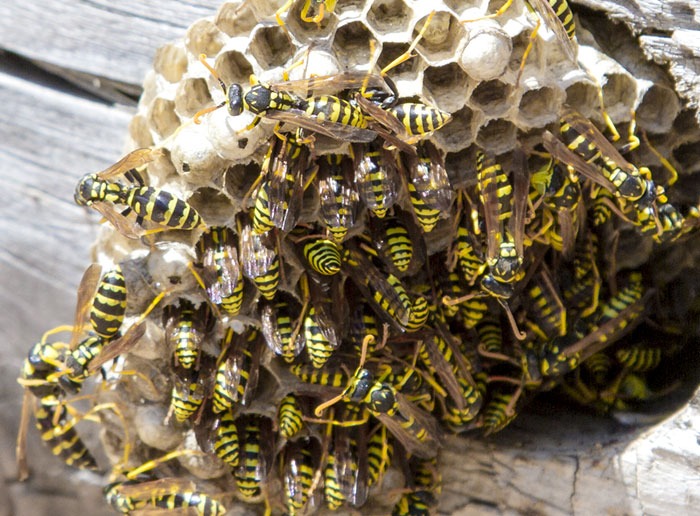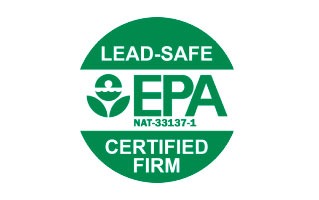We’re Local, Family Owned & Operated. We have a 100% Satisfaction Guarantee.
Wasps are a nuisance when you’re trying to enjoy time outside. You definitely do not want them as houseguests. While they are known to only sting when provoked they are able to sting multiple times, so even a swat can trigger a response.
While it’s true that wasps are beneficial to the environment – some act as pollinators and they prey on insects like caterpillars, aphids, flies and spiders – they can still be a danger to your safety. If you disturb a wasp’s nest they will swarm out quickly. Even if you are not allergic to their sting, they can cause significant injury.
"I have not seen ONE ant!!"
“Best business ever! Tried EVERYTHING I could to get rid of ants!!! E V E R Y T H I N G !!! Called Moyer: Walt came out. Took his time; studied the ant invasion. It’s been 4 months; after being invaded by ants; I have not seen ONE ant!!”
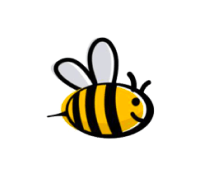
Pollinator Protection
We make every attempt to properly identity the type of bees we’re called to remove. If the bees are identified as honey or bumble bees, we will not treat and will refer to a local bee keeper to safety move the nest. Read more about how we treat bees below.
Wasps in our region
Four types of wasp species are common to Pennsylvania, southern New Jersey and Delaware.
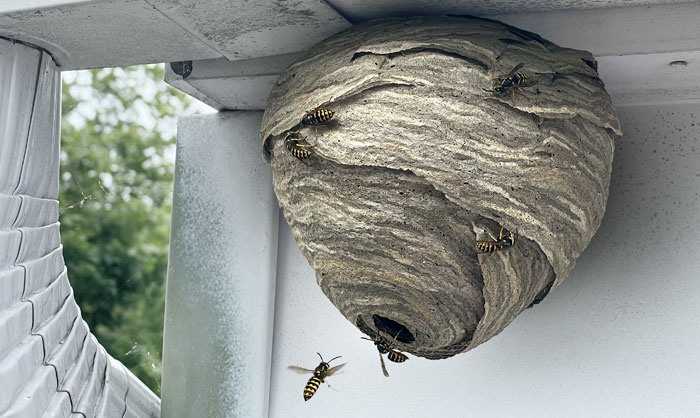
Paper Wasps
These brown and yellow wasps build their comb-layered nests in eaves and overhangs, anywhere that a building can provide extra protection.
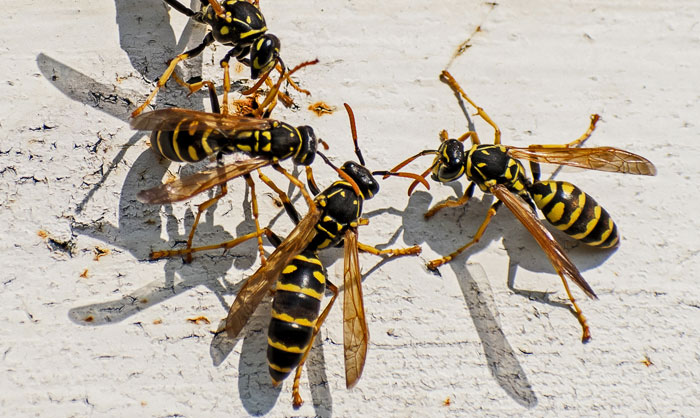
Yellowjackets
Yellowjackets resemble their name, having black and yellow markings. They build their nests in the ground, near bushes or logs. They also will build nests in the shelter of buildings.
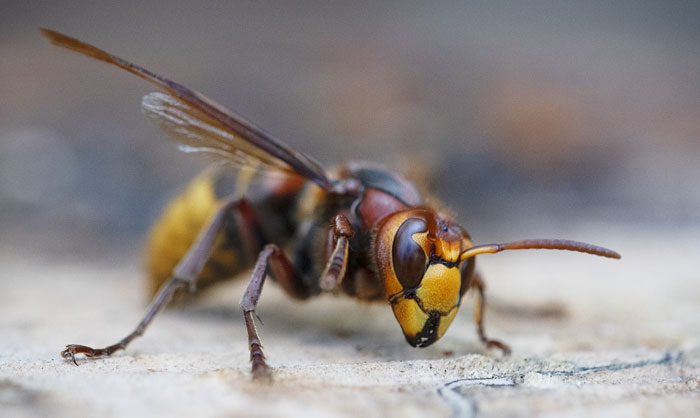
Hornets
There are two types of hornet common to this region: bald-faced hornets and European hornets. Both usually build their nests in trees or sturdy plants. Larger than wasps, they are black with distinct yellow or white stripes.
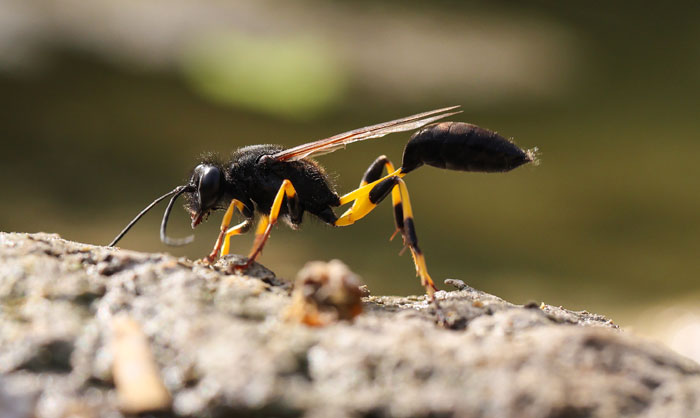
Mud dauber
The mud dauber wasp has a body that is longer and thinner than other wasps. They are primarily black with bright yellow markings. Mud daubers do not nest with a colony of wasps. Instead they create a home for their family units. While other wasps chew wood pulp to create paper nests, mud daubers, true to their name, use mud. They are also less likely to swarm.
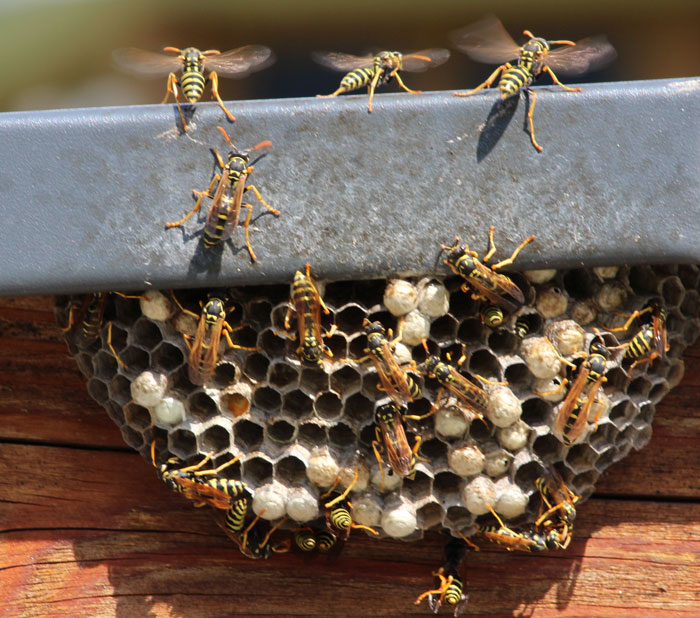
How to spot a wasp infestation
Wasps are most active during mid-late summer and early fall. You’ll know you have a wasp problem if you notice several wasps flying close to your home or yard during daylight hours. They’ll retreat to their nests at night.
Look for a nest in the eaves or underhang of your home. Wasps also build their nests in other outdoor spaces of your home that are easily accessed like open vents or behind shutters and siding. The nest might be located near their preferred food sources, like garbage, so check your trash cans. You can also watch the wasps, taking note of where they enter and exit your home. Overall, they will choose spaces that are undisturbed and provide warmth.
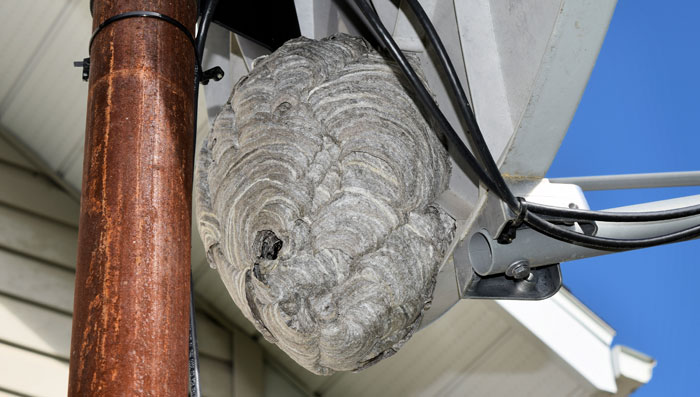
Don’t try this at home
You might be tempted to remove the nest on your own. Please do not attempt doing this. It is not safe. Even if you do have the good luck of getting close enough to spray the nest with a pesticide, you’re risking getting swarmed – and stung – by the entire wasp colony. It’s just not worth the risk. Please contact us to schedule safe wasp removal by a pest control expert.
Wasp Removal The Moyer Way
Inspect
We will inspect your property and home to locate the source of the infestation.
Identify
We will identify the type of wasp and create a treatment plan.
Monitor
We will inspect your property and home to locate the source of the infestation.
Treatment Plan
Depending on the size and severity of the wasp infestation, treatment can include:
- An application of a chemical spray or liquid directly on the nest. This will kill the wasps inside the nest on contact and also kill those who enter the nest after the application.
- If a wasp nest or wasps are found within your home, we may use a vacuum to remove them from these smaller spaces.

